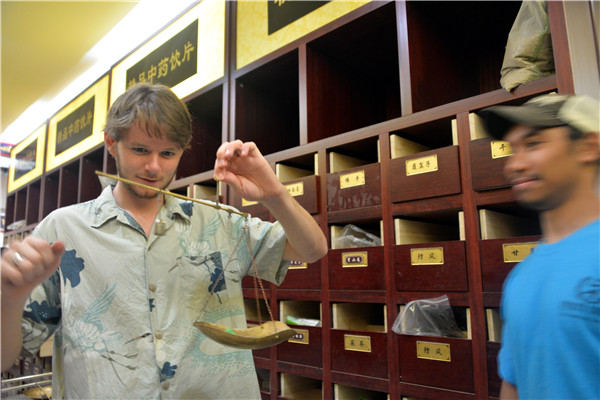 |
|
US students in a university in Shandong province learn about Chinese traditional medicine on June 27 in Liaocheng, Shandong province. [Photo by Zhao Yuguo / For China Daily] |
"International society has increasing recognition of traditional Chinese medicine. TCM's natural therapies are in fashion, with many Western pharmaceutical companies looking for a formula for natural products when they develop new drugs," said Lu Chuanjian, vice-president of the TCM hospital based in Guangzhou, capital of Guangdong province.
"Tried and tested throughout several thousand years, the effectiveness of TCM is indisputable, with all the ineffective medicines and those with adverse reactions eliminated over time," she said.
"Now we need to use modern technologies and ways of thinking to explain to the world how TCM works on specific diseases and prove that it can cure diseases.
"The modernization of TCM is the prerequisite for it to go global."
The cooperative project began in 2008. It has chosen 26 diseases and is collecting evidence of TCM's curative effects.
It requires a huge amount of work to search among the sea of ancient documents for descriptions of the symptoms and pathogenesis, and compare them with modern descriptions. The research team will then use the assessment system it established to evaluate the therapies.
Besides collecting evidence from documents, the team also conducts clinical research combining approaches of TCM and Western medicine.
The research on psoriasis and chronic obstructive pulmonary disease is almost done and the results will be published in papers and as part of the book collection Evidence-based Research of Clinical Chinese Medicine.
The books on the two diseases, with Chinese and English versions, are expected to be released in October, according to Lu.
Meanwhile, select young Chinese scholars were sent last year to work and study at the Royal Melbourne Institute of Technology, where they will obtain doctorates. The project plans to cultivate 20 such doctors by 2025, Lu added.